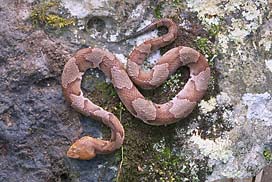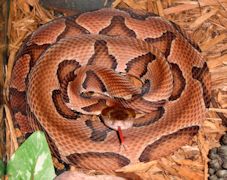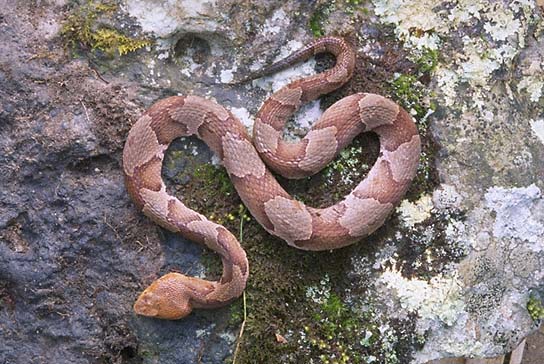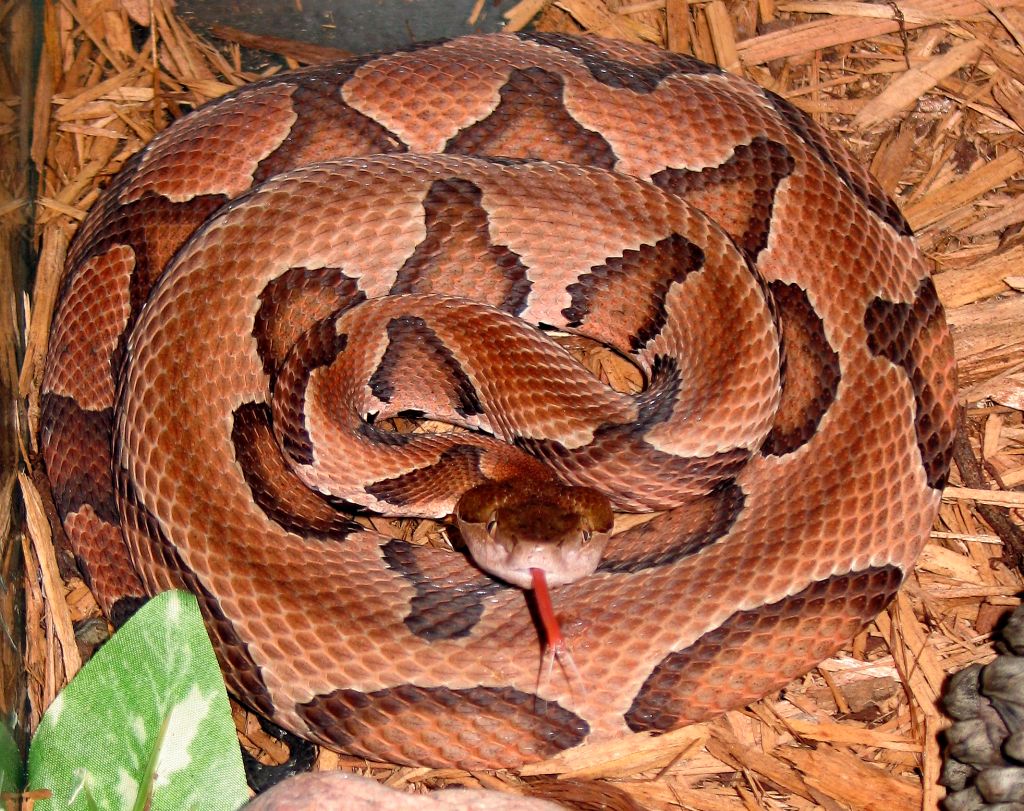Snakes
Description
22-53" (55.9-134.6 cm). Stout-bodied;
copper, orange, or pink-tinged, with bold chestnut or reddish-brown
crossbands constricted on midline of back. Top of head unmarked.
Facial pit between eye and nostril. Scales weakly keeled, in 23-25
rows. Anal plate single.
![]()
Warning
Copperhead bites are painful, but rarely pose a serious threat to human life. Copperheads, cottonmouths, and rattlesnakes belong to the pit viper family (Viperidae). These dangerous snakes have a heat-sensitive sensory organ on each side of the head that enables them to locate warm-blooded prey and strike accurately, even in the dark. The curved, hollow fangs are normally folded back along the jaw. When a pit viper strikes, the fangs rapidly swing forward and fill with venom as the mouth opens. The venom is a complex mixture of proteins that acts primarily on a victim's blood tissue. If you hear a rattlesnake shaking its rattle, back away. The snake is issuing a warning, and if the warning is ignored it may bite. Pit vipers are never safe to handle. Even dead ones can retain some neurological reflexes, and "road kills" have been known to bite. How to avoid and treat snakebites
Northern (A. c. mokasen), dark hourglass-shaped
crossbands, wide portion on sides, narrow across midline of back,
small dark spots between bands; sw. Massachusetts to sw. Illinois,
south to ne. Mississippi, n. Alabama, n. and c. Georgia, and
piedmont of South Carolina.
Trans-Pecos (A. c. pictigaster), dark crossbands
like those of Broad-banded with pale area at base of each band;
Davis Mts. and Big Bend region, Texas.
Breeding
Live-bearing. Mates spring to fall, peak April to May. 1-14 young, 7-10" (18-25 cm) long, are born August to early October; mature in 2-3 years.
Habitat
Wooded hillsides with rock outcrops above streams or ponds; edges of swamps and periodically flooded areas in coastal plain; near canyon springs and dense cane stands along Rio Grande; sea level to 5,000' (1,500 m).
Range
Sw. Massachusetts west to extreme se. Nebraska south to Florida panhandle and sc. and w. Texas.
Discussion
It basks during the day in spring and fall, becoming nocturnal as the days grow warmer. Favored summer retreats are stonewalls, piles of debris near abandoned farms, sawdust heaps, and rotting logs, and large flat stones near streams. It feeds on small rodents, lizards, frogs, large caterpillars, and cicadas. The young twitch their yellow-tipped tail to lure prey. In fall, Copperheads return to their den site, often a rock outcrop on a hillside with a southern or eastern exposure.




